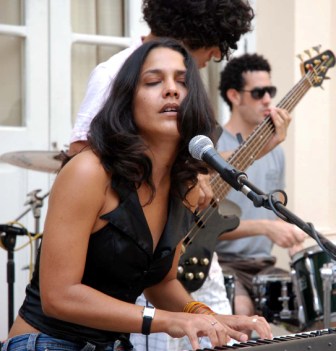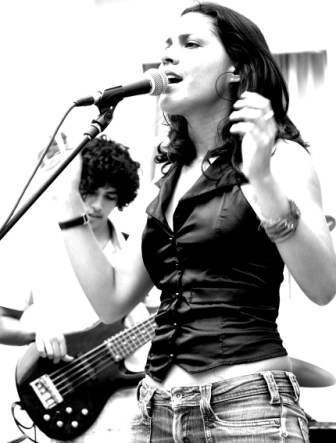Cuba’s Haydee Milanes
On the musical bridge from Cuba*
Osmel Almaguer

HAVANA TIMES, July 20 — Haydee Milanes is a young Cuban singer-songwriter whose popularity has risen to a crescendo on our musical scene. Likewise, she’s the daughter of the eminent troubadour Pablo Milanes, to whom she owes her success more for the talent and the education received than for the obvious advantages he has been able to offer her given his artistic stature.
Haydee Milanes was born in Havana on September 28, 1980, and grew up in an intense musical atmosphere. She took her first musical steps at the age of six through piano and singing classes she received at the Manuel Saumell Conservatory.
She also studied music theory and choral directing at the Amadeo Roldan Conservatory, and later “completing her musical education in Switzerland with the study of old-world canticles.”
Haydee’s first performance on stage was with her father when she was only10.
In her short but fruitful career, she has shared songs and stages with such Cuban musicians as Hernan Lopez Nussa, Tata Güines, Pancho Terry, Roberto Carcasses, Pablo Milanes, Omara Portuondo and David Blanco, among many others.
Interpreting songs composed by herself and those authored by prestigious composers, she has sung in numerous concerts in Cuba and abroad.
Her discography includes the albums Haydee (2005), Tanto Amar (2005), Tu y yo (2006), Haydee Milanes en Vivo (2008), and A la Felicidad (2009).

“Siempre que te vas”
From the CD La Habana de Noche (A collective album released in 2010)
I will hide in your heart, and I will drink the sweet honey that flows from your feelings, and I will fly like a sparrow, together at your side our wings will part the wind. I will give you the purest of this love.
Chorus: Whenever you leave, I feel it here in my soul. Whenever you leave, everything is like a river in the oblivion that moves away. Whenever you leave, I feel it here in my soul. Whenever you leave, everything is like a river in the oblivion that moves away.
I will miss you each second that you’re not here and I will see you in my dreams each dawn. Travel with that encouragement my love, and tell me if you don’t feel that breeze that seeks to protect you. I will give you the purest of this love.
Chorus: Whenever you leave, I feel it here in my soul. Whenever you leave, everything is like a river in the oblivion that moves away. Whenever you leave, everything is like a river in the oblivion that moves away.
I will hide in your fullness, and in that soft breathe of a kiss that wraps the moon. I will love you in the depth of this love.
In this song, sung to the beat of the “feeling” style, the singer is able to upturn a great number of sentiments, which she does by pulling together numerous expressive elements in the translucent yet profound lyrics of this song.
Despite a somewhat harrowing sense, the beauty of her voice returns hope to this confession.
The feeling is the same universal approach in millions of songs throughout all of history. Yet the distinction is in how each person can feel it and in how the person who composes it as well as the one who brings such a flood of emotion to the public puts in it what they particularly hold in life and each story of love.
Haydee sings the words smoothly, which in itself is a kind of a cooing. Each word seems to have the firm intention of being savored, so the declaration goes farther by itself than what one can feel as being the reason for its inspiration.
Love is sometimes prickly, and such stories are sometimes full of heartaches and disappointments. Like on a Cuban highway, no one is exempt from the potholes, those which nonetheless are absorbed to offer the person who is loved “the depth of this love.”
(*) A Musical Bridge from Cuba: This is an effort to find new bridges that promote communication between peoples of the diverse regions of the planet. I will be using simple narration in a series of articles to connect with those who are interested in the messages transmitted by Cuban songs, which due to their limited commercial potential and the difficulties posed by their translation, languish in a state of communicational stagnation – despite their being true jewels of Cuban culture.





